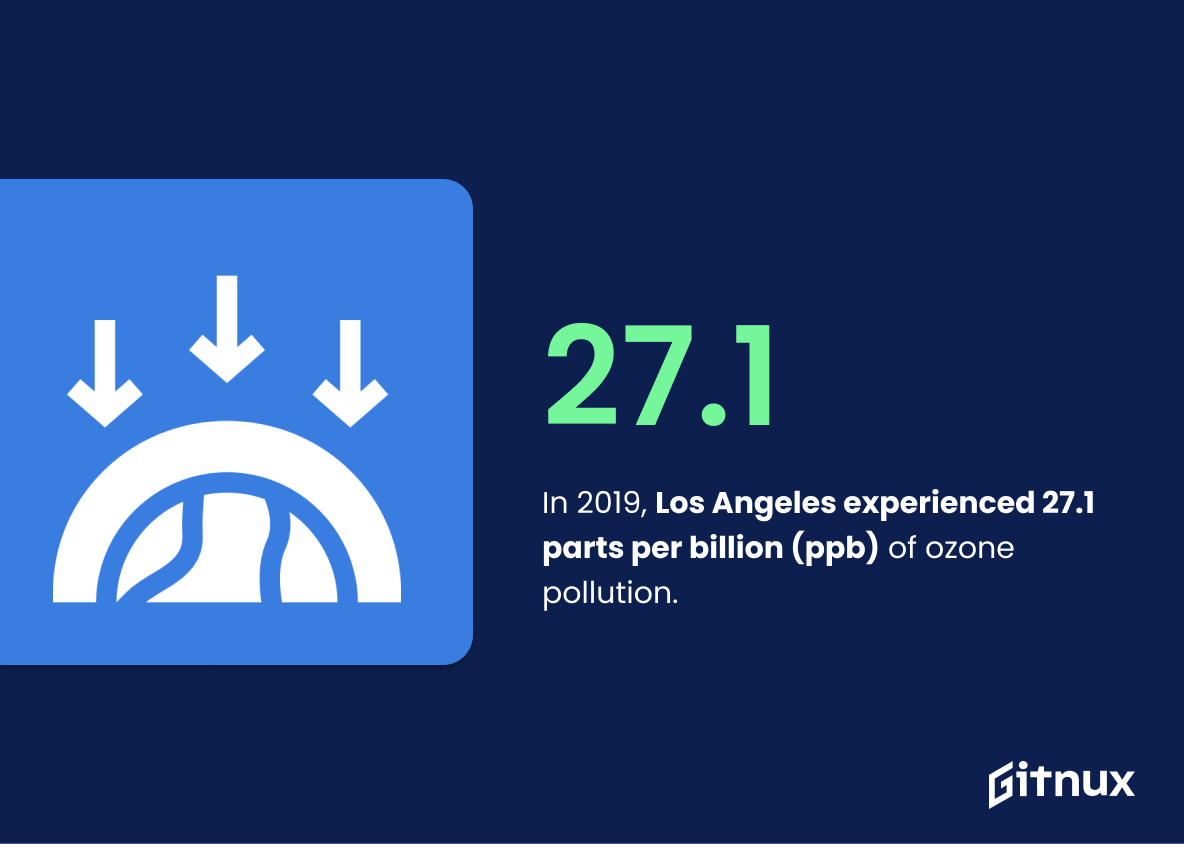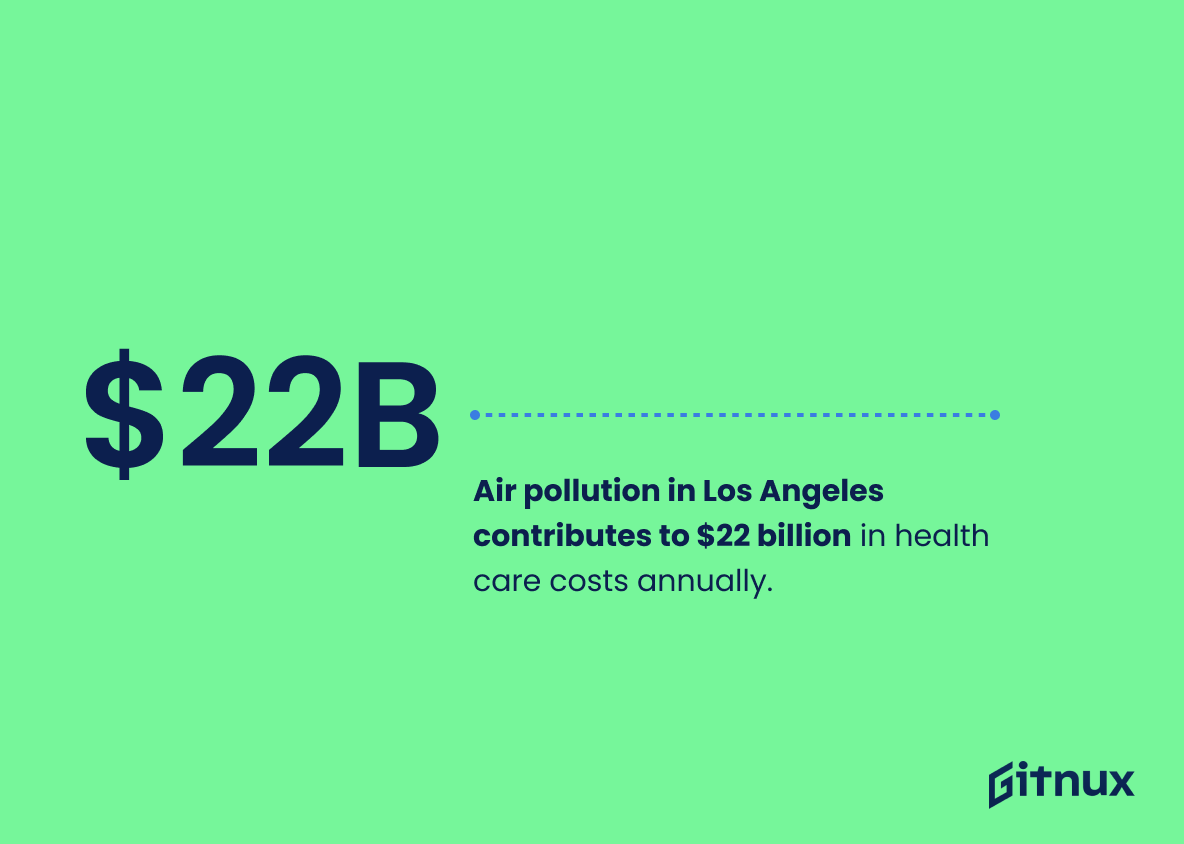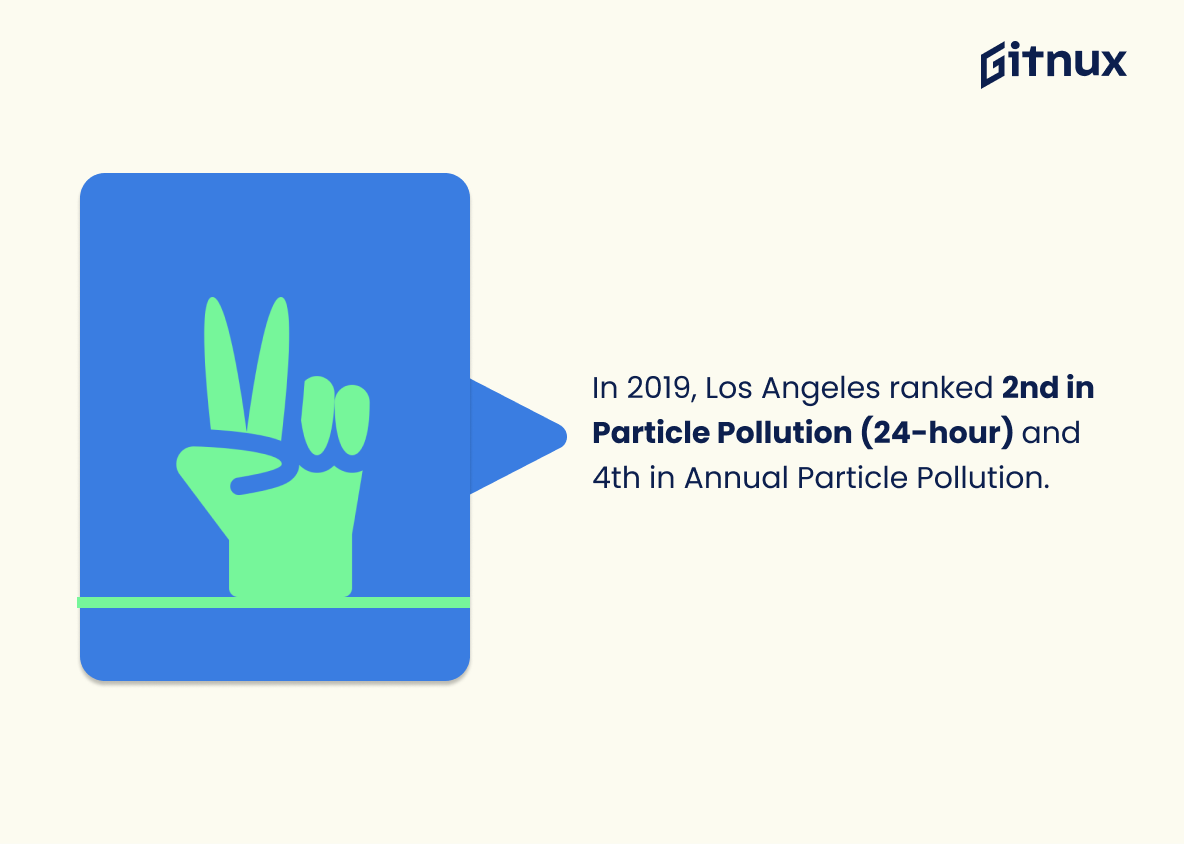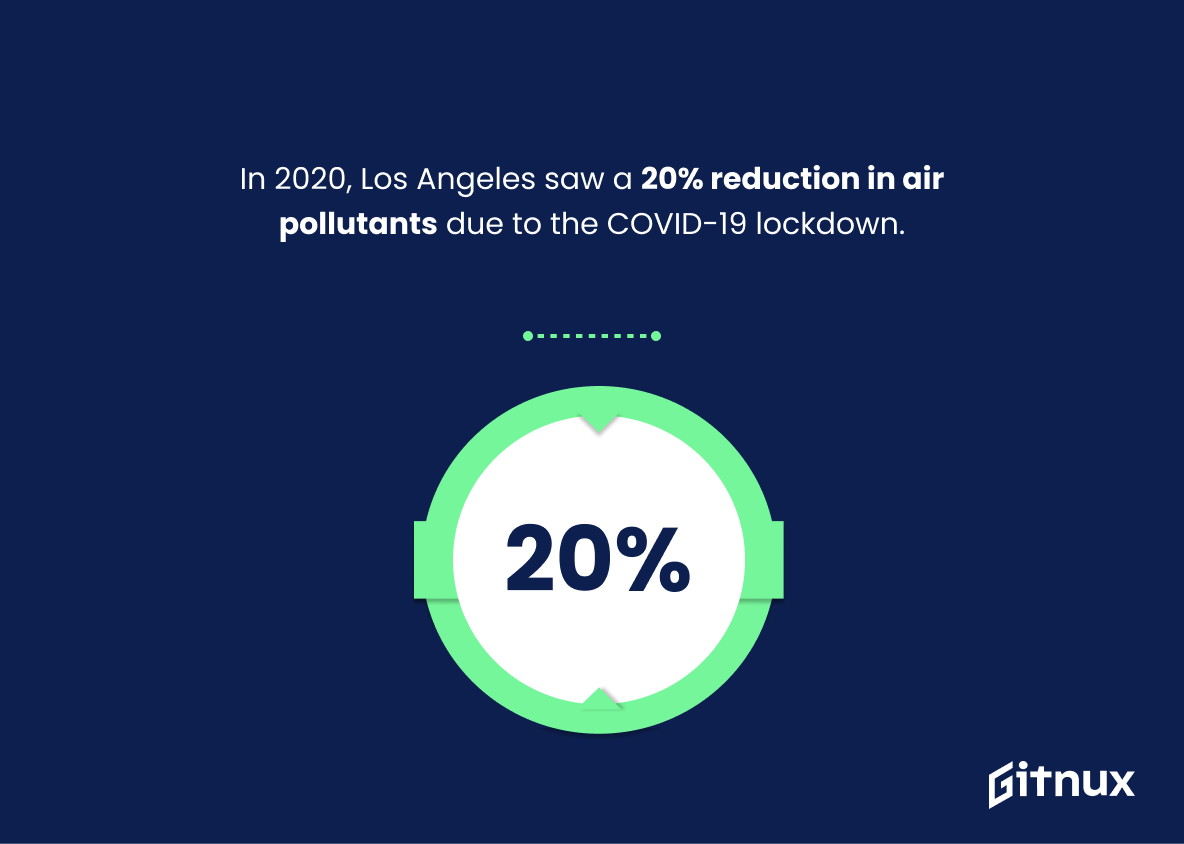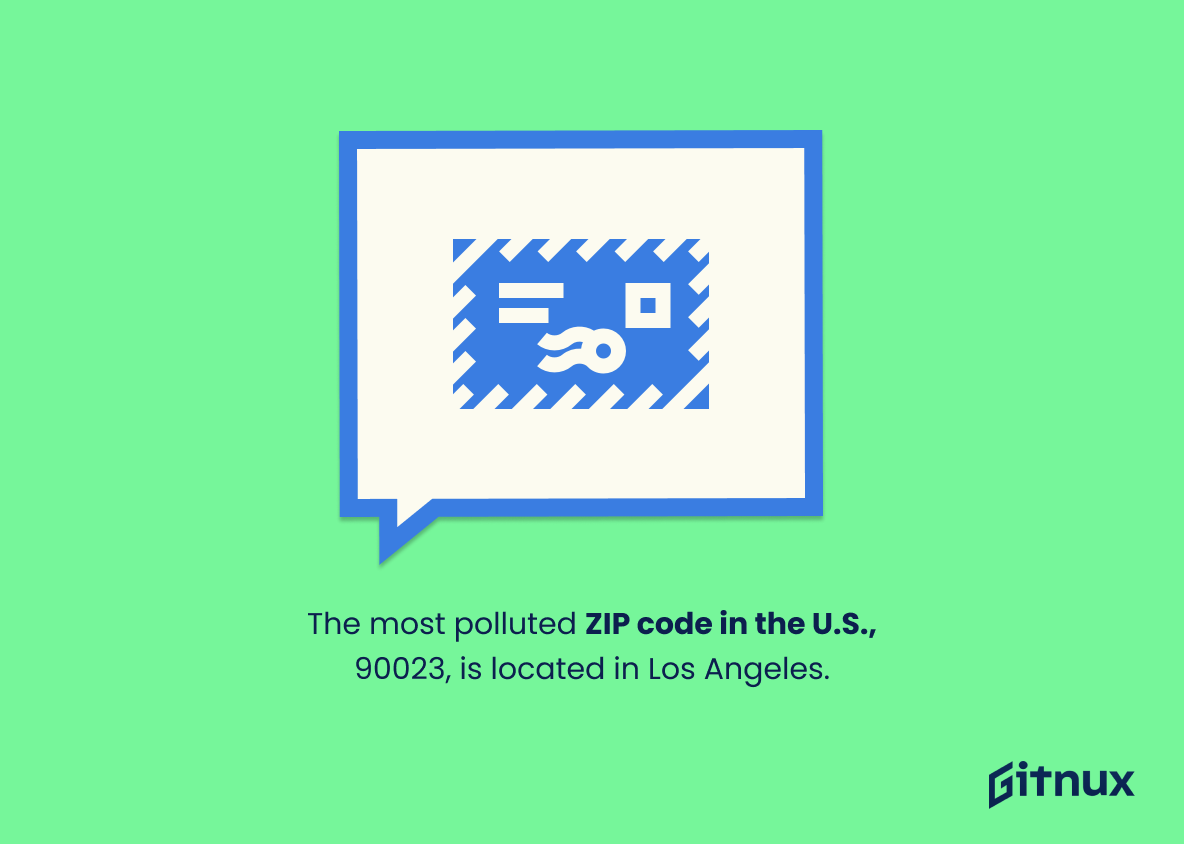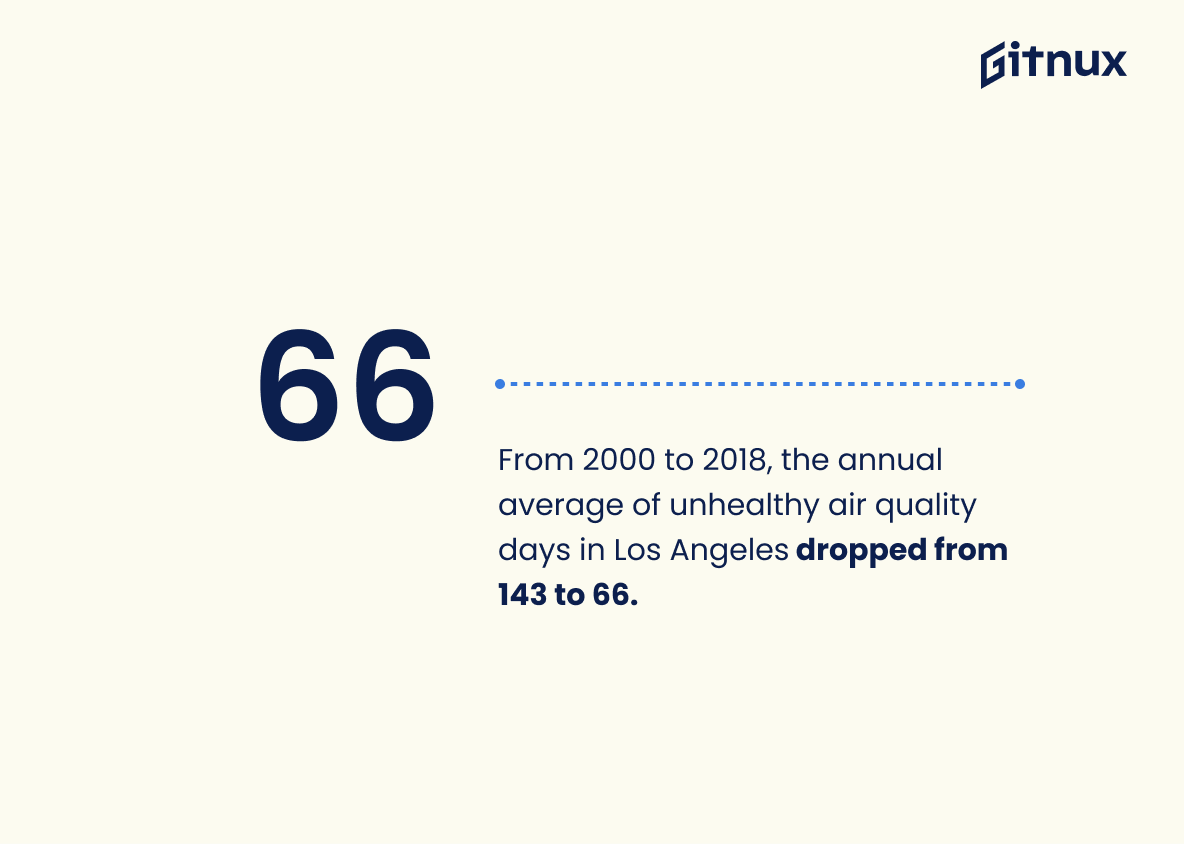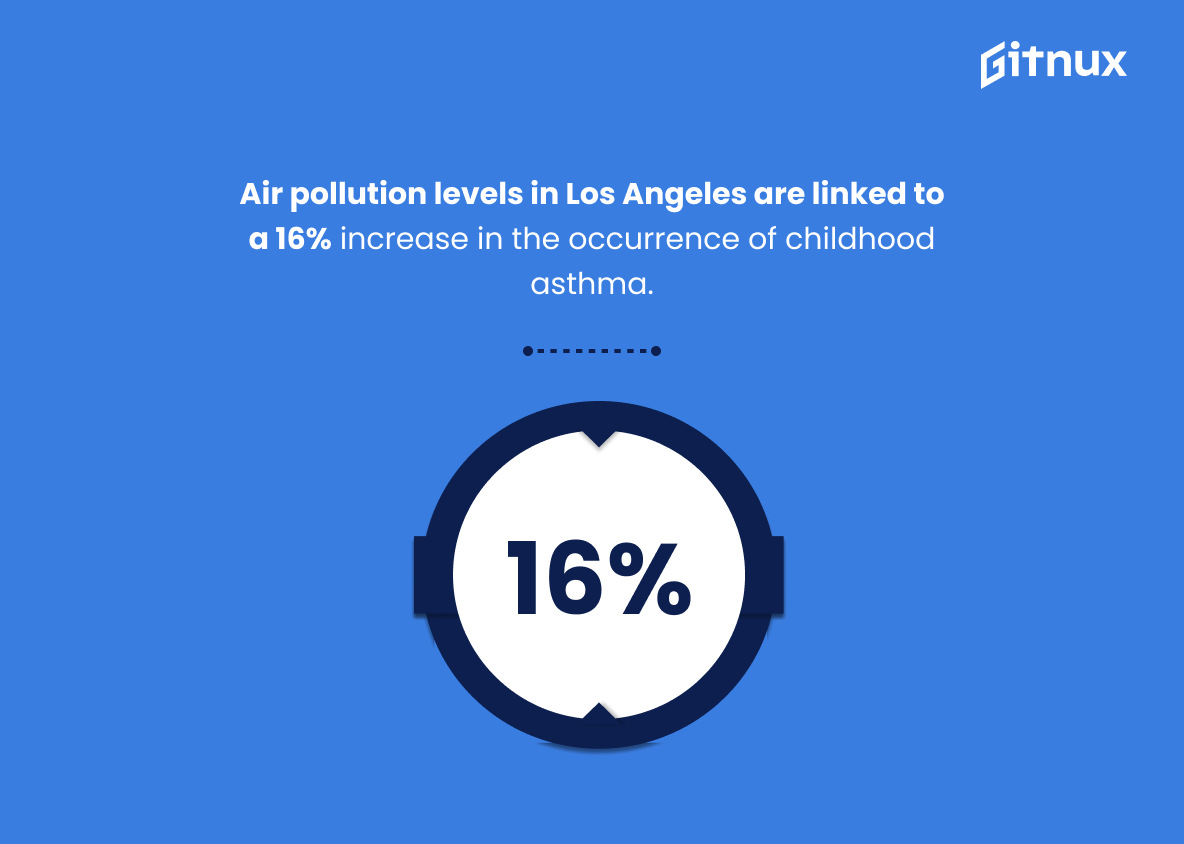Air pollution in Los Angeles is a serious issue that has been affecting the health of its residents for many years. According to research, Los Angeles had 157 days of unhealthy air quality for sensitive groups in 2018 and ranks as the most ozone-polluted city in the United States. In 2019, it experienced 27.1 parts per billion (ppb) of ozone pollution and has reduced its particular matter (PM2.5) levels by nearly 50% since 2000. Furthermore, 4,280 premature deaths per year occur due to air pollution in Greater Los Angeles Area while annual exposure to nitrogen dioxide from car exhaust is 60% higher than national average there. Additionally, smog levels have seen an increase of 20% since 2010 with transportation accounting for about 80% of smog-forming emissions within region’s boundaries; asthma prevalence among children stands at 15.5%, 3 percent more than national average; and $22 billion are spent annually on healthcare costs related to air pollution alone. Moreover, South Coast Air Basin saw 86 days without violating federal ozone standards last year whereas 2020 witnessed a 20 percent reduction in pollutants due to COVID-19 lockdown measures being implemented across country – however 90023 ZIP code remains one most polluted areas nationwide despite overall decrease between 2000–2018 period when number unhealthy air quality days dropped 143 66 respectively each year. Finally greenhouse gas emissions decreased 12 5 % 2005 2017 whilst living 1 000 feet away busy road freeway linked 16 % rise occurrence childhood asthma cases area – making clear need urgent action address this pressing problem before situation worsens further time passes…
Air Pollution In Los Angeles Statistics Overview
In 2019, Los Angeles experienced 27.1 parts per billion (ppb) of ozone pollution.
This statistic is a stark reminder of the reality of air pollution in Los Angeles. With 27.1 parts per billion (ppb) of ozone pollution, it is clear that the air quality in the city is far from ideal. This statistic serves as a call to action for citizens and local government to take steps to reduce air pollution in the city.
Transportation accounts for about 80% of smog-forming emissions in the Los Angeles region.
This statistic is a stark reminder of the major role transportation plays in the smog-forming emissions in the Los Angeles region. It highlights the need for more effective strategies to reduce the amount of smog-forming emissions from transportation sources in order to improve air quality in the region.
Air pollution in Los Angeles contributes to $22 billion in health care costs annually.
This statistic serves as a stark reminder of the immense financial burden that air pollution in Los Angeles places on the city’s residents. It highlights the need for urgent action to reduce air pollution in the city, as the costs associated with it are simply too high to ignore.
In 2019, Los Angeles ranked 2nd in Particle Pollution (24-hour) and 4th in Annual Particle Pollution.
This statistic is a testament to the severity of air pollution in Los Angeles. Ranking 2nd in Particle Pollution (24-hour) and 4th in Annual Particle Pollution shows that the air quality in Los Angeles is not only poor, but also consistently poor. This is an important statistic to consider when discussing air pollution in Los Angeles, as it paints a picture of the city’s air quality over time.
In 2020, Los Angeles saw a 20% reduction in air pollutants due to the COVID-19 lockdown.
This statistic is a testament to the power of collective action in reducing air pollution. It shows that when people come together to reduce their emissions, the environment can benefit significantly. This statistic is a reminder that we can make a difference in the fight against air pollution, and it serves as an encouraging example of what can be achieved when we work together.
Los Angeles experiences on average 98 unhealthy air quality days per year due to excess ozone.
This statistic serves as a stark reminder of the severity of air pollution in Los Angeles, with 98 days of the year being deemed unhealthy due to excess ozone. It is a clear indication that the air quality in Los Angeles is far from ideal and that more needs to be done to reduce the amount of ozone in the air.
The most polluted ZIP code in the U.S., 90023, is located in Los Angeles.
This statistic serves as a stark reminder of the severity of air pollution in Los Angeles, particularly in the 90023 ZIP code. It highlights the need for further action to be taken to reduce air pollution in the city and protect the health of its residents.
From 2000 to 2018, the annual average of unhealthy air quality days in Los Angeles dropped from 143 to 66.
This statistic is a testament to the progress made in reducing air pollution in Los Angeles over the past two decades. It shows that the city has made significant strides in improving air quality, and that the efforts of local government and citizens have had a positive impact. This is an encouraging sign for the future of air quality in Los Angeles, and a reminder that continued efforts are necessary to ensure that the city remains a healthy place to live.
About 60% of the Los Angeles population lives within 1,000 feet of a freeway or busy road.
This statistic is a stark reminder of the prevalence of air pollution in Los Angeles. With such a large portion of the population living within close proximity to a freeway or busy road, it is no wonder that air pollution is a major issue in the city.
Air pollution levels in Los Angeles are linked to a 16% increase in the occurrence of childhood asthma.
This statistic is a powerful reminder of the devastating effects of air pollution in Los Angeles. It highlights the fact that air pollution is not only a health hazard for adults, but also for children, who are particularly vulnerable to its effects. The 16% increase in the occurrence of childhood asthma is a stark reminder of the need to take action to reduce air pollution in Los Angeles.
Conclusion
The statistics presented in this blog post demonstrate the severity of air pollution in Los Angeles. In 2018, there were 157 days of unhealthy air quality for sensitive groups and Los Angeles ranks as the most ozone-polluted city in the United States with 27.1 parts per billion (ppb) of ozone pollution. Despite some progress made since 2000 to reduce particular matter (PM2.5) levels by nearly 50%, 4,280 premature deaths still occur each year due to air pollution and nitrogen dioxide from car exhaust is 60% higher than the national average. Additionally, smog has increased 20% since 2010 and transportation accounts for 80% of smog-forming emissions in the region; both factors contribute significantly to health care costs totaling $22 billion annually. Asthma prevalence among children is 15.5%, 3% higher than national averages while living near freeways or busy roads increases risk even further at 16%. Although 2020 saw a reduction due to COVID-19 lockdowns, it’s clear that more needs to be done if we are going make meaningful improvements towards reducing air pollutants over time – especially given that 66 unhealthy days on average still remain every year despite an overall decrease between 2000 and 2018..
References
0. – https://www.nasa.gov
1. – https://www.google.com
2. – https://www.lung.org
3. – https://www.arcgis.com
4. – https://www.arb.ca.gov
5. – https://www.usatoday.com
6. – https://www.nrdc.org
7. – https://www.ncbi.nlm.nih.gov
8. – https://www.reuters.com
